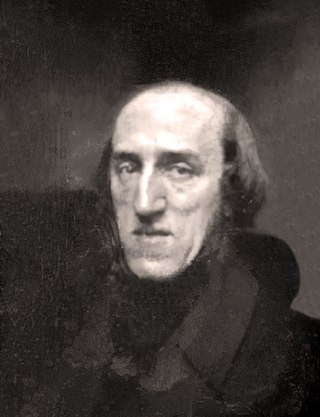
Joseph Antoine Ferdinand Plateau was a Belgian physicist and mathematician. He was one of the first people to demonstrate the illusion of a moving image. To do this, he used counterrotating disks with repeating drawn images in small increments of motion on one and regularly spaced slits in the other. He called this device of 1832 the phenakistiscope.

Théophile "Théo" van Rysselberghe was a Belgian neo-impressionist painter, who played a pivotal role in the European art scene at the turn of the twentieth century.
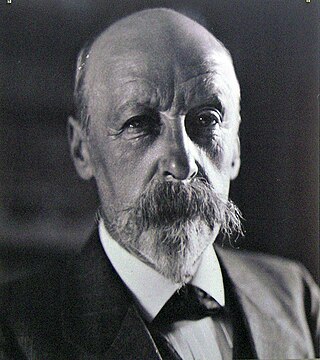
Emile Claus was a Belgian painter.

François-Joseph Navez was a Belgian Neoclassical painter; known for his portraits and genre scenes.
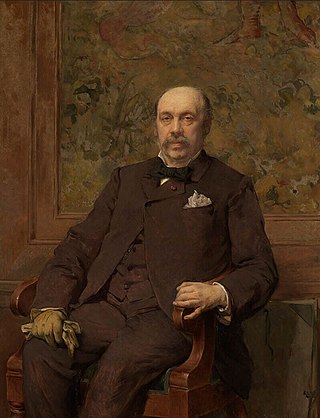
Jean-François Portaels or Jan Portaels was a Belgian painter of genre scenes, biblical stories, landscapes, portraits and orientalist subjects. He was also a teacher and director of the Academy of Fine Arts of Ghent and the Académie Royale des Beaux-Arts in Brussels. He is regarded as the founder of the Belgian Orientalist school. He was praised in his time as the premier painter of 'everyday elegance and feminine grace'. Through his art, teaching and his leadership of the Académie Royale in Brussels he exerted an important influence on the next generation of Belgian artists, including his pupil Théo van Rysselberghe.

Alphonse Hubert François Balat was a Belgian architect.

The Royal Academy of Fine Arts of Brussels is an art school established in Brussels, Belgium. It was founded in 1711. Starting from modest beginnings in a single room in Brussels' Town Hall, it has since 1876 been operating from a former convent and orphanage in the Rue du Midi/Zuidstraat, which was converted by the architect Victor Jamaer. The school has played an important role in training leading local artists.
Ignace Brice was a neoclassical painter of genre, portraits and religious scenes from Brussels.
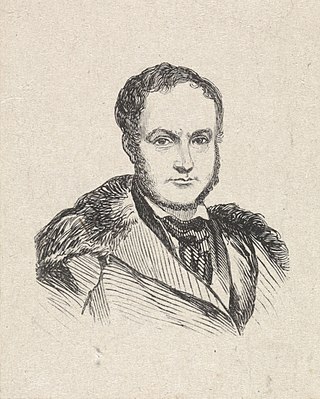
Henri van der Haert, Hendrik van der Haert or Henri Anne Victoria van der Haert (1790–1846) was a Belgian portrait painter, sculptor, illustrator and engraver.

Cornelis Cels was a Flemish painter of portraits and religious subjects. He was a professor and director of the Académie des Beaux-Arts de Tournai. He was patronized as a portrait painter by the court of The Hague.
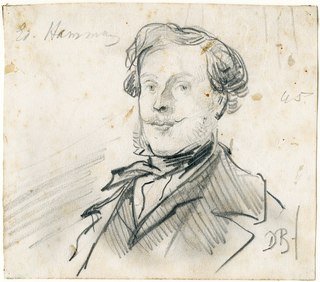
Edouard Jean Conrad Hamman was a Belgian painter and engraver who specialized in portraying scenes from the lives of famous artists, scholars and the nobility.
Maximilien Lambert Gelissen, born in Brussels in 1867, was a pupil of a certain Rubens of Brussels for drawing, and of Henri Van Assche for painting. He painted mainly landscapes and genre paintings. His works are kept in many collections, including the Royal Museums of Fine Arts of Belgium and the Museum of Fine Arts, Ghent. In 1820 he won the prize for landscape from the Royal Academy of Science, Letters and Fine Arts of Belgium.

Isabelle Catherine van Assche-Kindt was a Belgian landscape painter from Brussels.

The Van der Noot family is a Belgian noble family. The title of Count van der Noot is a title created by Emperor Charles VI on 16 May 1716. Since then this title belongs to the Belgian nobility.

Franz Meerts or Frans Meerts was a Belgian painter and aquarellist known for his interior scenes, genre scenes, still lifes and landscapes. He was also active as an author, publisher and copyist.
Events in the year 1838 in Belgium.
Events in the year 1839 in Belgium.
Events in the year 1841 in Belgium.
Events in the year 1895 in Belgium.
Events in the year 1846 in Belgium.














